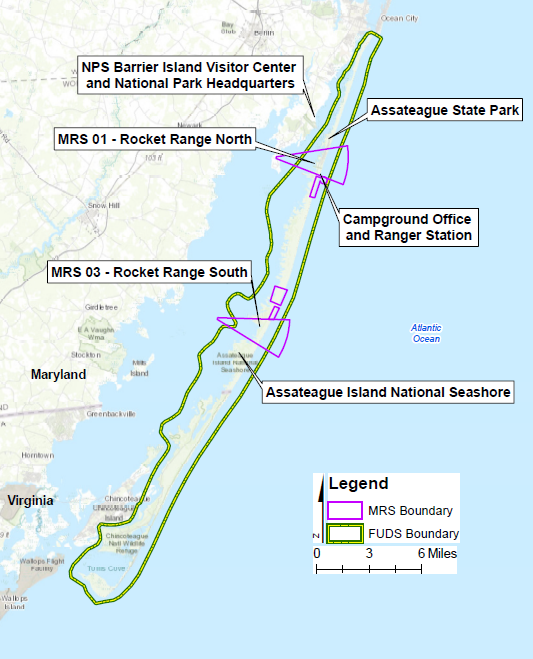Assateague Island is a 37-mile-long, 17,522-acre barrier island, located along the eastern shore of Maryland and Virginia on the Delmarva Peninsula.
During World War II, from 1944 - 1947, the U.S. Navy used two areas on the island for air-to-ground target practice, using practice rockets, bombs and projectiles. Most of the aircraft originated from naval air stations located in Chincoteague, Virginia, and Manteo, North Carolina.

It was reported the Department of Defense created two to three burial areas for spent munitions at the end of the war during site cleanup.
In 1943, the Chincoteague National Wildlife Refuge was established, and, in 1965, Assateague Island was established as a national seashore. Assateague Island is currently owned by the National Park Service (NPS), the State of Maryland, the U.S. Fish and Wildlife Service, the State of Virginia, and the U.S. Coast Guard.
The Formerly Used Defense Site areas, totaling approximately 7,000 acres, are located in the northern portion of the island and are owned by NPS and the State of Maryland.
Explosive ordnance demolition teams have previously recovered rocket motors, practice rockets, and inert ballistic tips from the northern rocket range. In addition, a practice bomb and 20mm cannon casing have been found.
Within a 2-mile radius of the sites, there are few residential areas and no industrial presence. NPS has distributed educational materials regarding previous findings and appropriate safety protocol.
The U.S. Army Corps of Engineers completed a Site Inspection in 2007 that recommended a Remedial Investigation/Feasibility Study (RI/FS). The contract for the RI/FS was awarded in fiscal 2016. The RI fieldwork was completed in spring 2018. The team found no live munitions or explosives of concern during the thorough investigation. Only munitions debris was uncovered, which poses no explosive risk; therefore, no further action is proposed.